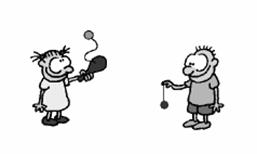|
MST Standards:
Standard I – Students will use mathematical
analysis, scientific inquiry, and engineering design, as appropriate, to
pose questions, seek answers, and develop solutions.
Standard IV Science – Students will understand and apply
scientific concepts, principles, and theories pertaining to the physical
setting and living environment and recognize the historical development
of ideas in science.
Standard V Technology – Students will apply technological
knowledge and skills to design, construct, use, and evaluate products
and systems to satisfy human and environmental needs.
Note: This is based on a 20-week course. Computers will be
available to students on a daily basis.
Weeks 1- 2
|
Science |
Technology |
|
What is the nature of science and the scientific method?
What do scientists do?
· How to act like a scientist by solving a problem
using the scientific method.
· Students do a KWL
Why should I care about science?
· Students read articles about science.
Who are some of the great scientists and what are their
contributions to science?
|
1. Students are introduced to the Internet and how to
search for information. They begin by going to a specific
site for a science article:
www.sciencenewsforkids.org
2. Students find their own article.
3. Teacher provides a list of scientists responsible for
great leaps in science. Students will create a webquest
about one of the scientist. Students will be provided with a
detailed rubric outlining the essential elements that must
be found in the webquest. In addition, the teacher will
create a model of a webquest about a scientist. Instructions
on how to use Word and make a hyperlink are to be included.
|
Weeks 3-6
|
Earth Science |
Technology |
|
The Earth’s Changing Surface:
Hurricanes
Tsunamis
Tornadoes
Volcanoes
Earthquakes
Flooding
cyclone
Topographic Mapping
|
Students will select one of the natural disasters and produce
a pamphlet, using Word or Publisher to inform the general public
about the nature of the disaster. A detailed rubric will be
created that outlines the essential elements that must be
present.
The teacher will produce a model and rubric to guide
students.
Students will research different types of maps: satellite,
topographic, climate, etc.
They will pick one type of map and gather data from their
country of origin. Students will create a report using
interactive mapping programs.
The teacher will produce a model and rubric to guide
students. |
Weeks 7-11
|
Life Science |
Technology |
Disease and Immunity
-
Microorganisms
-
Parasites
-
Genetic
-
Environmental
-
Life style

|
Students
will select a category of disease and produce a newsletter The
Disease Gazette in which they will discuss the causative
agent, examples of diseases, treatments, etc.
A crossword or word search puzzle will be included as
well as an interview with a scientist who is a specialist in the
field. Homeopathic
remedies from students’ native lands should be included, as
well as interviews with family members to obtain “home
remedies.” Two
students working together may complete this project.
In addition to producing a model newsletter, the teacher
will provide students with a list of suggested websites.
|
Weeks 12 – 17
|
Chemistry |
Technology |
|
Elements and the Periodic Table
Home Chemistry
· Foods
· Cosmetics
· Cleaners
· Polymers, natural and synthetic

|
1. Students will work through the self-guided topics in the
website: http://web.buddyproject.org/web017/web017
2. Working with a partner, students will complete the
Element Adventure WebQuest.
3. Students will create an advertisement for an element
using WordArt and graphics. A book will be compiled with all
the student work
4. Students will create a PowerPoint presentation that will
be shown to the class about a product derived from living
things (wool, cotton, silk, paper, natural gas) or one
artificially synthesized (gasoline, plastic, shampoo,
detergent, cosmetics, PVC, Polystyrene, nylon, Teflon™) A
history of the product, its chemistry, and uses should be
included.
5. Students will create both graphs and spreadsheets which
will compare and contrast three selections from one of the
above mentioned groups.
|
Weeks 18 – 20
|
Physics |
Technology |
Forces and
Newton
’s Laws of Motion
Sports
and Physics
 |
Students
will write a children’s book about a simple machine in which
they will explain to a typical 8-year-old how a particular
simple machine works.
Using a digital camera, students will take original
photos of students using the machine.
The book will be bound and must be illustrated with
original art or computer graphics.
Some choices include: scissor, pliers, seesaw, doorknob,
nutcracker, bottle opener, zipper, inclined plane, screw,
screwdriver, etc.
Students,
working in teams, will investigate physics concepts and
principles related to motion by exploring their favorite sport.
Specifically, they will examine how friction, gravity,
acceleration, inertia, momentum, and action-reaction forces
influence the motions in a sport. Students will create a
humorous Power Point Presentation or a flipchart* to share with
the class. The
following questions will be answered on a slide or card on the
flipchart:
·
How do
rolling, sliding, an fluid friction influence the movements
of…
·
How does
the force of gravity influence the movements in …..
·
How does
inertia apply to….
·
How does
momentum apply to…
·
How do
action-reaction forces apply to……
·
Student
generated question
* The answer to each question is underneath an index card. They are
all mounted on a decorated poster board in a staggered
configuration.
|
This curriculum was written and developed by Joyce Kent
(Chair) and Carla Soldano (Science Teacher at Isaac E. Young)
home |


